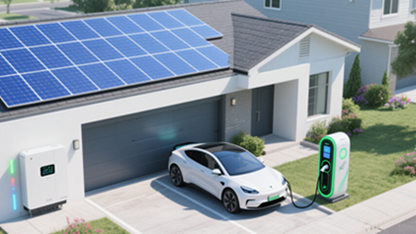What is the difference between a lightning impulse current and an impulse discharge current?
Lightning surge current and impulse discharge current are two different electrical phenomena, each with distinct characteristics, sources, and applications. Below is a detailed explanation of the differences between these two types of currents:
Lightning Surge Current
Definition:
Lightning surge current refers to the instantaneous large current caused by lightning. When lightning strikes the ground or a building, it generates a massive current pulse, which is the lightning surge current.
Characteristics:
High Amplitude: The peak value of lightning surge current can reach hundreds of thousands of amperes.
Fast Rise Time: The rise time of lightning surge current is very short, typically reaching its peak within a few microseconds.
Short Duration: The duration of lightning surge current is also very short, generally ranging from tens of microseconds to hundreds of microseconds.
Source:
Lightning surge current primarily originates from natural lightning activity.
Impact:
Damage to Electrical Equipment: Lightning surge current can cause damage to electrical equipment, including insulation breakdown, overheating, and explosions.
Communication Interference: Lightning surge current can interfere with communication lines, leading to data transmission errors or interruptions.
Safety Risks: Lightning surge current poses a threat to personal safety, potentially causing electric shock accidents.
Protection Measures:
Lightning Rods: Installing lightning rods can safely guide lightning current into the ground.
Surge Protective Devices (SPDs): Using surge protective devices (SPDs) can absorb or limit lightning surge current, protecting electrical equipment.
Grounding Systems: A well-designed grounding system can effectively dissipate lightning surge current, reducing damage.
Impulse Discharge Current
Definition:
Impulse discharge current refers to the instantaneous large current caused by overvoltage or insulation breakdown in electrical equipment or systems. This type of current typically occurs in high-voltage systems, such as high-voltage transmission lines and substations.
Characteristics:
High Amplitude: The peak value of impulse discharge current is usually high, but typically lower than that of lightning surge current.
Relatively Fast Rise Time: The rise time of impulse discharge current is relatively fast, but generally longer than that of lightning surge current.
Short Duration: The duration of impulse discharge current is also short, but generally longer than that of lightning surge current.
Source:
Impulse discharge current primarily originates from overvoltage events in electrical equipment, such as operational overvoltages and insulation breakdown.
Impact:
Damage to Electrical Equipment: Impulse discharge current can cause damage to electrical equipment, including insulation breakdown, overheating, and explosions.
System Failures: Impulse discharge current can cause failures in electrical systems, leading to power outages or equipment shutdowns.
Safety Risks: Impulse discharge current poses a threat to personal safety, potentially causing electric shock accidents.
Protection Measures:
Overvoltage Protection Devices: Using overvoltage protection devices (such as surge arresters and metal oxide varistors) can absorb or limit overvoltage, preventing the generation of impulse discharge current.
Enhanced Insulation: Strengthening the insulation of electrical equipment can improve its ability to withstand overvoltage.
Regular Testing: Regularly testing the insulation condition of electrical equipment can help identify and repair potential insulation issues.
Summary
Lightning Surge Current primarily originates from natural lightning activity. It has extremely high amplitude, very fast rise time, and short duration, posing significant threats to electrical equipment and personal safety.
Impulse Discharge Current primarily originates from overvoltage events in electrical equipment. It has relatively high amplitude, faster rise time compared to lightning surge current, and shorter duration compared to lightning surge current, and similarly has a significant impact on electrical equipment and systems.
The Electricity Encyclopedia is dedicated to accelerating the dissemination and application of electricity knowledge and adding impetus to the development and innovation of the electricity industry.













